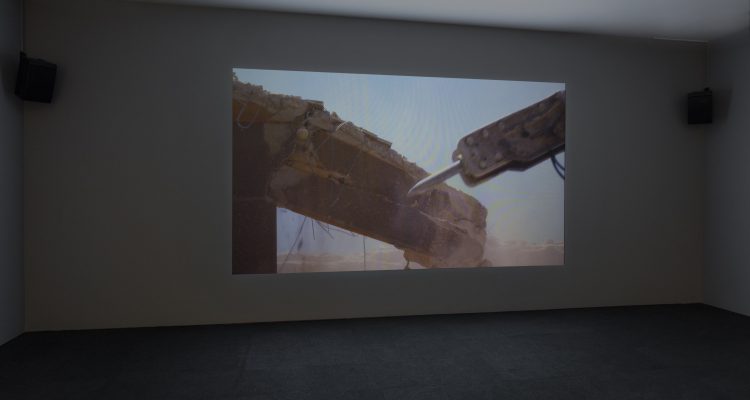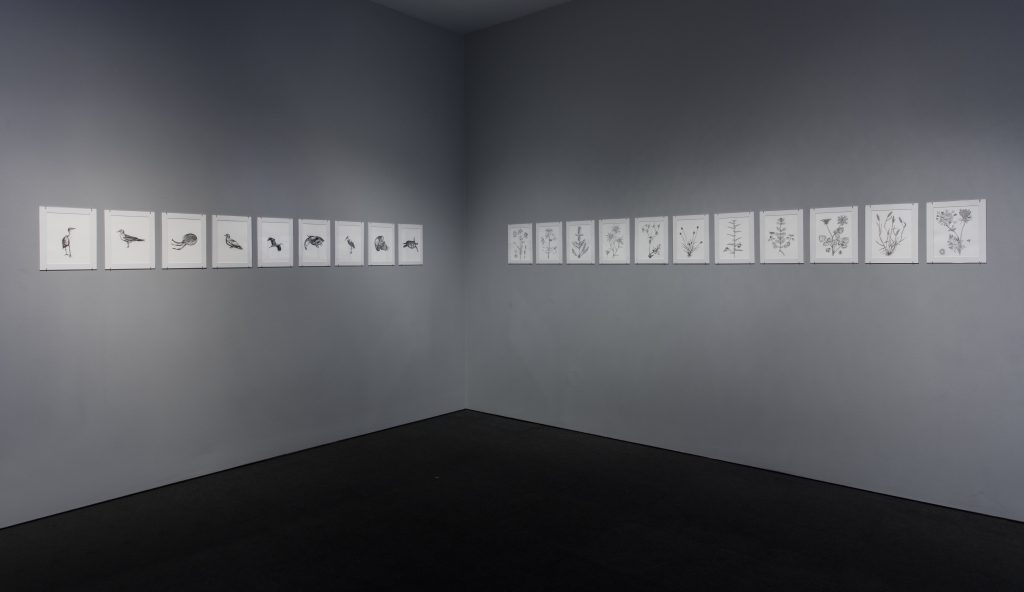 Installation view, Hammer Museum, Los Angeles, September 17, 2016–January 8, 2017. Photo: Brian Forrest.
Installation view, Hammer Museum, Los Angeles, September 17, 2016–January 8, 2017. Photo: Brian Forrest.
Drawing parallels between two distinct narratives in Beirut’s recent history, Marwa Arsanios’ research examines the material outcomes of the neoliberal project that took shape at the beginning of the 1990s, immediately following the end of the Lebanese Civil Wars. Starting from the recent visual and political memory of the garbage crisis that began in 2014, this project addresses the threatening long-term transformations brought about by the structures of late capitalism and their local manifestations in Lebanon’s environmental and sociopolitical reality.
Marwa Arsanios reflects on this reality, taking as a launching point the summer of 2015 when the closure of the Naameh landfill south of the city caused thousands of tons of garbage to fill the streets of Beirut and Mount Lebanon with trash, and led to a public outcry against state corruption. The “garbage crisis” erupted concurrently with the emergence of art museums and other cultural institutions throughout the city. Despite the growth in cultural infrastructure, a number of building projects remain fallow, and overflowing landfills threaten the city’s environment and the health of its inhabitants.

Installation view, Hammer Museum, Los Angeles, September 17, 2016–January 8, 2017. Photo: Brian Forrest.
Arsanios’ project includes a digital video, small topographical models of the city’s landfills, and a suite of drawings that depict the flora and fauna surviving in these dumps despite their toxicity. The topographical models of the Karantina and Costa Brava dumps show only the most basic contours and features of these sites, suggesting that they are simply empty spaces to be filled. The models are meant to function as “cartographies of extended lands,” in the artist’s words, that will become “inaccessible islands built on rubble and garbage, where real estate havens will be created. These will most of the time remain empty because people will buy them as assets or investments.” The models show that the landfills are actually part of a new form of empire-building thinly veiled as redevelopment and capitalist progress.
The film Falling Is Not Collapsing, Falling Is Extending proceeds from the moment the building where the artist grew up was demolished, and moves towards looking at land reclamation created over garbage dumps and landfills that are then turned into real estate investment projects, thus extending a link between the materiality of the waste and real estate economy. In this film, Arsanios depicts a portrait of a space, alternating between distant shots of Beirut’s expansion over the sea and closing in on the personal loss of her childhood home. At a certain point, Arsanios inserts herself in the film through an old recording from many years ago. In those recordings, Arsanios speaks about the urbanization of Beirut, as if to remind herself and us that the story travels far back, both in her own memory and in the collective experience of the city’s inhabitants